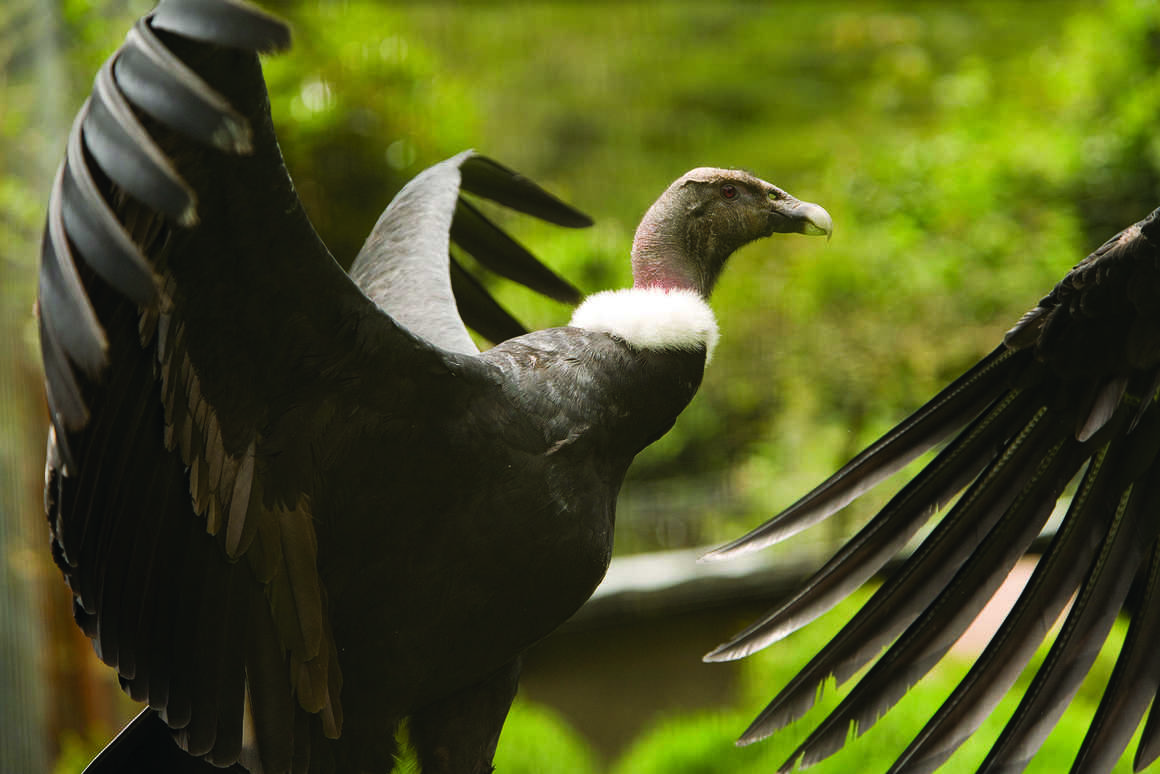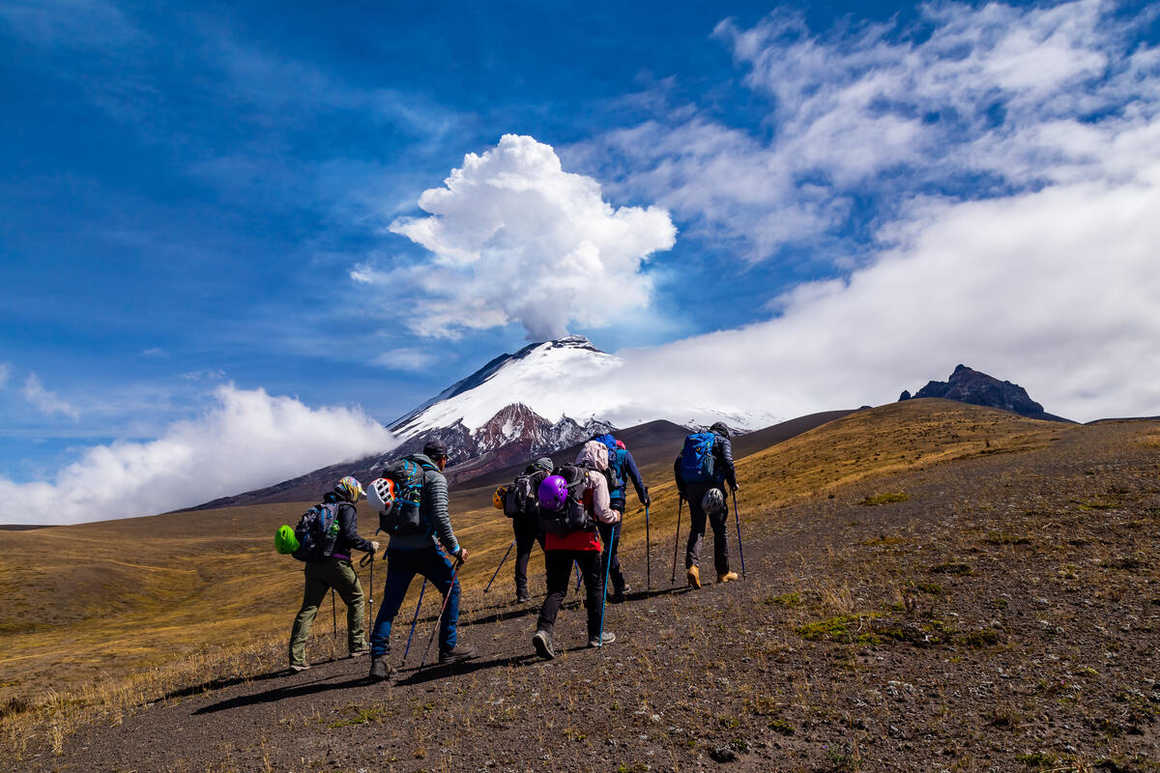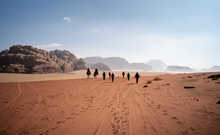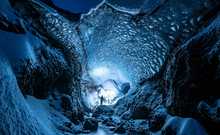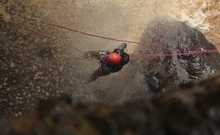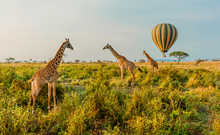National Parks in Ecuador
Ecuador is a country of diverse travel experiences, from
hiking volcanoes and exploring the Amazon rainforest to diving with wildlife in
the Galápagos Islands. It’s a paradise for adventure travel lovers.
In total, Ecuador boasts 11 national parks plus 25 nature
reserves. These are divided across all 4 regions of the country: the Amazon rainforest, Andean
Highlands, The Coast and Lowlands and the Galápagos
Islands, covering
around 24% of its land. So, wherever you are planning to travel in Ecuador,
there’s ample opportunity to explore the country’s impressive biodiversity and
unique geographical features.
These national parks harbour a wide range of mammal and bird
species, and each have their own unique experiences ranging from volcano
trekking, biking, rafting and natural hot
springs. Travelling to Ecuador’s national parks with expert adventure travel
operators, like Kandoo, gives visitors an opportunity to experience the best of
the country’s diverse ecosystems.
This guide brings you information about the unique offerings
each of the national parks in Ecuador has to offer. Find everything you need to
know about where to explore, things to do and what wildlife to spot in all 11
Ecuador national parks.
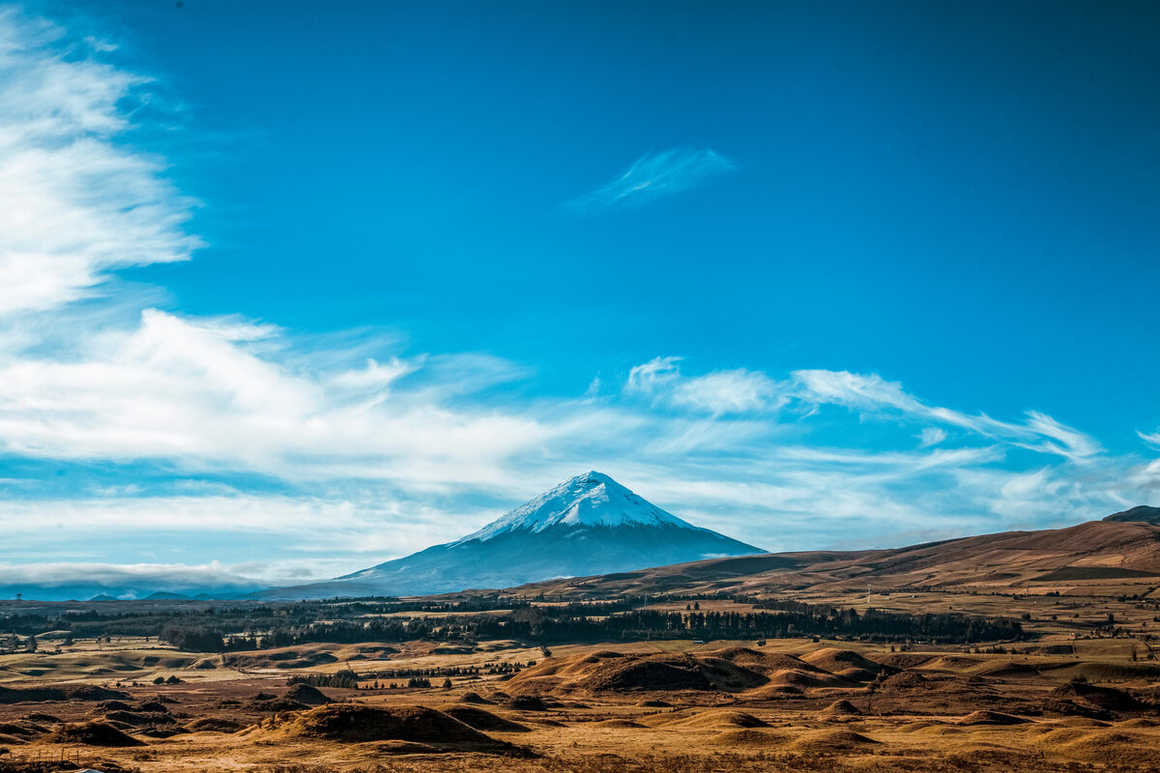
List of National Parks in Ecuador
Here is the full list of national parks in Ecuador:
- Cayambe-Coca National Park
- Cotopaxi National Park
- El Cajas National Park
- Galápagos National Park
- Llanganates National Park
- Machalilla National Park
- Podocarpus National Park
- Sangay National Park
- Sumaco Napo-Galeras National Park
- Yacurí National Park
- Yasuní National Park
Cayambe-Coca National Park
Location: Andean Highlands
Land area: 4,031sq km
Straddling the provinces of Pichincha, Napo and Sucumbíos in northern Ecuador, Cayambe-Coca National Park encompasses diverse ecosystems from the high Andes to the Amazon rainforest. The park is accessible via three park entrances. One is near the town of Cayambe, another is near the town of Papallacta and the third is near the village of Santa Rosa de Quijos.
Cayambe-Coca National Park is perhaps best known as the home of the snow-capped Cayambe volcano, from which the reserve gets its name. Cayambe lies in the centre of the reserve and is the third highest peak in Ecuador at an elevation of 5,790m. Beneath this dormant volcano, there’s a system of 60 lakes known as Papallacta.
The park is a haven for wildlife enthusiasts, offers numerous hiking opportunities and features relaxing natural hot springs. Popular activities include trekking to Cayambe volcano, exploring the Papallacta lakes and hot springs and witnessing the majestic San Rafael waterfall.

Cotopaxi National Park
Location: Andean Highlands
Land area: 333.9sq km
Located in the central region of Ecuador approximately 50km south of Quito, Cotopaxi National Park has much unusual flora and fauna and intriguing geological formations. The park spans 3 provinces and its accessibility makes it a popular destination for both day trips and extended stays. If you want to see more of the park, there are also lodges available in the area.
Most famously, Cotopaxi National Park is home to the iconic snow-capped Cotopaxi volcano, one of the world’s highest active volcanoes and the country’s second highest peak at 5,897m above sea level. Although still considered an active volcano, the last eruption occurred in January 2016. Ruminawi volcano and Sincholagua volcano are neighbouring dormant volcanoes further adding to the stunning volcanic landscape.
Adventure seekers can embark on guided treks to the challenging summit of Cotopaxi or around the waters of Quilotoa Crater lake. For those who prefer, mountain biking is also available here. The park nurtures diverse wildlife, including red brocket deer, Andean fox, Andean puma, white-tailed deer, huge herds of guanacos, orange-faced falcon and Andean gull to name a few.
El Cajas National Park
Location: Andean Highlands
Land area: 285.4sq km
Just west of the town of Cuenca in the southwestern part of Ecuador, El Cajas National Park boasts high-altitude lakes, cloud forests and rugged landscapes. The park is located at altitudes over 3,100m and the picturesque landscapes that are sculpted by rugged mountains and pristine wilderness are the highlight for the majority of visitors.
Birdwatchers can spot species such as the Andean condor, mountain toucans, tropical woodpeckers and numerous hummingbirds, as well as a number of endangered bird species. Other popular wildlife include cougar, puma, mountain wolf, fox, skunk, deer, weasel, llama, coati, porcupine, paca and shrew. As well as wildlife spotting, there are plenty of hiking trails within the park.
Galápagos National Park
Location: Galápagos Islands
Land area: 7,880sq km
Located approximately 926km off Ecuador’s coast, the Galápagos Islands are a UNESCO World Heritage Site renowned for their unique biodiversity. The Galápagos Islands operate under a special law that prioritises the conservation and preservation of their unique ecosystems. Visitors typically fly from Quito or Guayaquil on mainland Ecuador.
The Galápagos Islands are made up of 13 major islands and over 60 smaller islands. The islands are famous for endemic species like giant tortoises, land iguanas and marine iguanas. Other popular species include the green turtle, blue-footed booby, waved albatross, Galápagos hawk and Galápagos penguin. Beneath the sea, sea lions, whale sharks, hammerhead sharks and several other marine species await divers and snorkelers.
As well as wildlife spotting, there are several trails and hikes available across the different islands. For avid adventurers who wish to witness endemic wildlife and unique volcanic landscapes next to paradise beaches, trekking in the Galápagos is a dream.
Llanganates National Park
Location: Andean Highlands
Land area: 2,195sq km
Llanganates National Park is a unique and awe-inspiring wilderness that offers a glimpse into Ecuador's natural and cultural heritage. It is best known for its dramatic landscapes, rich biodiversity and legendary tales of hidden treasures.
One of the most captivating aspects of Llanganates National Park is the legend of the "Treasure of the Llanganatis." According to local lore, the Inca general Rumiñahui hid a vast cache of gold, silver, platinum, and other treasures in the remote mountains to prevent them from falling into Spanish hands during the conquest. This treasure, often linked to the infamous riches of Atahualpa or El Dorado, has lured countless explorers into the park's challenging and often perilous terrain.
The park is a haven for nature enthusiasts and adventurers and a significant site for historical and cultural exploration. It boasts an extraordinary array of nearly 1,000 plant species, almost 200 bird species, 50 mammal species, and 23 species of reptiles and amphibians.
Machalilla National Park
Location: The Coast and Lowlands
Land area: 750sq km
Of all the national parks of Ecuador, Machalilla National Park is the only one located along the Pacific coast on the far west side of Ecuador. This Ecuador park is comprised of forest, beaches, a handful of islands and some marine ecosystems. Unsurprisingly, the varied habitats are home to an amazing collection of diverse wildlife.
Birdwatching is one of the park's common attractions, with over 270 species of birds migrating or nesting in the dry forest. The Peruvian screech owl, toucan, golden-olive woodpecker, green macaw, and the whooping motmot are some of the coveted sightings. In addition to birdlife, visitors often like to see armadillos, iguanas and monkeys or humpback whales in the ocean.
Podocarpus National Park
Location: The Coast and Lowlands
Land area: 1,462sq km
Straddling the Andes and Amazon regions in far southeastern
Ecuador, the Podocarpus National Park is renowned for its rich biodiversity. Access
to the highland sector of the park is through Cajanuma control, about 10km
south of Loja, whilst the main access to the lowland sector is the Bombuscaro
control, 6km south of Zamora by a dirt road that follows the Río Bombuscaro.
The park is named after the Podocarpus glomeratus, which is
a type of conifer tree. There are three river basins here, including Loyola,
Nangaritza, and Numbala, nestled amongst two different jettisons of the Andes Mountains
and the parks varied elevations support ecosystems ranging from cloud forests
to alpine tundra.
Visitors can engage in hiking, birdwatching and exploring
waterfalls. Approximately 6% of the world’s bird species may be found within
the park, and around 40% of Ecuador’s population of birds may be found within
the park’s terrain. As well as birdlife, the parks ecosystem gives way to a
diversity of rare mammals including the elusive jaguar, puma, mountain tapirs
and the intriguing spectacled bear. To find out more about bears in South
America, check out our blog.
Sangay National Park
Location: Andean Highlands
Land area: 5,178sq km
Spanning from the Andes to the Amazon, Sangay National Park is the third largest national park in Ecuador. Access is challenging due to its remote location, requiring travel via a number of remote, potholed dirt roads originating from Quito and several other major towns.
The park encompasses a vast range of ecosystems, from glaciers and volcanoes to tropical rainforests and wetlands. The Andes Mountain range is at the heart of the national park, which features the extinct El Altar volcano and two active volcanoes known as Sangay and Tungurahua, adding a dramatic touch to the landscape.
For visitors, the park offers fantastic hiking and trekking opportunities, though it’s best to go with a guide. Nature lovers will be thrilled to know that the park is a haven for wildlife, hosting species like the spectacled bear, mountain tapir and over 400 bird species.
Sumaco Napo-Galeras National Park
Location: Andean Highlands
Land area: 2,055sq km
Located in northeastern Ecuador, this national park features the isolated Sumaco volcano and diverse habitats from lowland rainforests to high-altitude ecosystems. The park’s remoteness and ecological variety offer a unique experience for those seeking off-the-beaten-path adventures.
This Ecuador national park is a biodiversity hotspot, known for its stunning landscapes and rich wildlife. The parks unique position at the intersection of the Andes and the Amazon creates a meeting point for diverse flora and fauna.
Adventurous travellers can trek to the summit of Sumaco (3,900m) which offers views of the snow-capped peaks of Cayambe and Cotopaxi. Alternatively, rafting on the Rio Napo, Rio Quijos and Rio Coca is also a popular activity in the area.
Yacurí National Park
Location: Andean Highlands
Land area: 431sq km
Yacurí National Park is one of the youngest National Parks in Ecuador, founded in 2009. It is situated in southern Ecuador, spanning the provinces of Loja and Zamora-Chinchipe, near the Peruvian border. The only way to get here is a 2-hour drive from Amamluza in the canton of Espindola in the province of Loja.
Yacurí is known for its pristine highland lakes, diverse flora and fauna. There are 18 species of mammal living within the park, including the endangered mountain tapir and the endangered spectacled bear. It’s rarely visited by tourists due to its inaccessibility, but there are several hiking trails found here.
Yasuní National Park
Location: Amazon rainforest
Land area: 9,823sq km
Located in the Amazon rainforest region of Ecuador, Yasuní National Park is one of the most biodiverse places on earth for the bird, tree, mammal, amphibian and bat species that reside here. A UNESCO World Heritage Site, it is one of the last continuous tracts of virgin tropical forest in eastern Ecuador. Access typically involves a flight from Quito to Coca, followed by a canoe journey.
For those who love the great outdoors, Yasuní National Park is a giant playground. Visitors can immerse themselves in the rainforest through guided hikes, canoeing and wildlife watching. Eco-lodges offer sustainable accommodations and opportunities to experience the rich flora and fauna, including jaguars, pink river dolphins and countless bird species.
Do I need a permit to visit Ecuador’s National Parks
You don’t need a permit to visit Ecuador’s national parks, but some require entrance fees.
The amount of this entrance fee will depend on the age of the visitor and park you are entering. These fees help to protect Ecuador’s natural landscapes, funding the conservation of flora and fauna, terrestrial and marine life. It also benefits the local community by improving basic services, education projects, sports, health, sanitation and services directly related to visitors to the parks.
Other national parks may have specific charges for activities like climbing, but general entry fees are not required.
Trek in Ecuador with Kandoo Adventures
Kandoo offer epic trips to Ecuador with itineraries that explore the country’s most iconic national parks, nature reserves and areas of outstanding natural beauty. While Ecuador may not be the first place you think of for an adventure holiday, we’re here to change that. Our trips are run by expert guides and take in the most iconic biodiversity and geographical landscapes of Ecuador, offering an abundance of exciting activities adventure seekers will love.
From trekking through the volcanic highlights of the rugged Ecuadorian landscape to exploring the waterfalls and canyons of the
Amazon rainforest, Ecuador is well placed as your next adventure travel destination. For an experience like no other, trekking off the beaten track and exploring a unique area of South America that is often overlooked, check out our Ecuador trips or get in touch with our helpful team to discuss our trips to Ecuador today.


